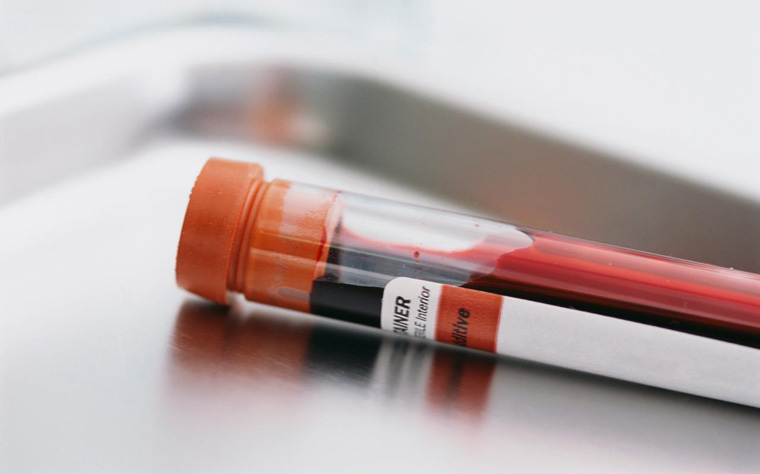The first step (aside from identifying symptoms) in diagnosing testosterone deficiency, aka low-T, is to do a blood test.
Here I cover some important practical things to know about a blood draw for testosterone analysis…

Time of day – is it necessary to obtain morning values?
All fractions of testosterone in the blood, i.e. total testosterone, free testosterone and bio-available testosterone, display a circadian rhythm. Highest levels are found in the morning and the lowest levels occur in the evening, with peak levels at approximately 08:00 h and nadir at approximately 20:00 h.[1-6]
In healthy males aged 26-45 years, levels of free testosterone and bio- testosterone in early morning samples (near 05:30 am) are significantly different from those taken before midnight.[2] The amplitude of the free testosterone rhythm (34%of basal) is greater than that for total testosterone (24% of basal).[2] Another study in men aged 30-40 yr found total testosterone levels to be 20-25% lower at 16:00 h than at 08:00 h.[1]
To consistently capture peak testosterone levels for evaluation, an early morning blood draw time generally has been accepted as standard practice, and clinical practice guidelines for diagnosing testosterone deficiency recommend measuring testosterone in morning blood samples taken between 7-11 am.[7, 8]
However, this recommendation has been challenged on the basis of a lack of consistent evidence that morning levels are more accurate in diagnosing androgen deficiency than those measured in the afternoon. [9] Aging is associated with a decrease in the diurnal variation of total testosterone levels [1, 5, 10-13], even though in fit healthy men the diurnal rhythm can be maintained into the 7th decade of life. [4] The degree of this age-related blunting varies between studies. One study found total testosterone levels to be 10% lower at 16:00 h than at 08:00 h in men aged 70 yr [1], while another study demonstrated that the early morning rise in testosterone levels characteristic of young men is not present in men aged 52 yr.[10]
Therefore, an early morning blood draw, which is unpractical for many patients, may be unnecessary in many men over 45 yr. A recent study confirmed that men older than age 45 years can have their total testosterone drawn at any time before 2 pm without fear of misleading results.[15] However, while an early morning blood draw may not be critical for capturing total testosterone levels in men 45 years or older, when measuring free testosterone or bio-available testosterone, an early morning draw time around 8-10 am may still be preferable for men aged up to 75 years.[14]
Food intake before blood draw – does it impact testosterone levels?
Potentially more important than the issue of morning vs. afternoon blood testing is the impact of food intake on acute fluctuations in testosterone levels. You may be wondering “Do I need to fast for a testosterone blood test?” Several studies have investigated the testosterone response in men to meals of different caloric and macronutrient (carbohydrate, protein and fat) content. Depending on the meal composition, these studies demonstrated after-meal (postprandial) decreases in total testosterone ranging from 15% to 40%.[16-18] Fat rich meals may also lower free testosterone levels.[17, 18] This 15-40% drop in total testosterone levels after meal ingestion can easily obscure the 20-25% morning vs. afternoon difference.[1]
A high-fat test meal containing 1,300 kcal (11% carbohydrate, 3% protein, 86% fat) was shown to cause a significant reduction in total testosterone (-22%) and free testosterone (-23%) 1 hour post-ingestion in healthy men [18]. This reduction remained significantly below baseline for 8 hours.[18] Carbohydrate intake (75 g glucose, 300 kcal) has been demonstrated to suppress total testosterone levels by 10% [19], 14% [20] and 30% [21]. Intake of 75 g glucose resulted in a 15% reduction of fasting total younger men levels after 30 minutes in younger men, which continued for up to 3 hours.[20]
Two recent studies specifically investigated the impact of an intake of 75 g glucose on total testosterone levels in healthy men of a wide age range, spanning 19-78 years and a BMI of 20-39.[22, 23] It was found that glucose ingestion at 8:30 am significantly lowered total testosterone levels, basal testosterone secretion rate, and total (basal + pulsatile) testosterone secretion rates compared with water ingestion at the same time of day.[22] In the case of LH, pulsatile rather than basal secretion fell after glucose intake. Testosterone and LH levels, as well as basal testosterone and pulsatile LH secretion, declined proportionately. In particular, the initial 2-h decrement in testosterone levels was 86 (27–144) ng/dl per unit decrease in LH concentrations (IU/L). The testosterone secretory burst size (mass, ng/dl), mode (min), and number (per 6.5 h) did not change, indicating that glucose selectively suppresses non-pulsatile (basal) testosterone secretion.[22] It was concluded that, barring a selective increase in the metabolic clearance rate of testosterone, glucose intake in men acutely suppresses pulsatile LH and basal testosterone secretion after an overnight fast.[22]
A similar study by another research group examined the impact of glucose intake on serum testosterone levels in men with varying glucose tolerance [23]. 74 men (19-74 years, mean 51 years) underwent a standard 75 g oral glucose tolerance test with blood sampling at 0, 30, 60, 90 and 120 min. Glucose ingestion caused a mean 25% decrease in total testosterone levels (121 +/- 9 ng/dL). The maximum decrease amounted to a whopping 47%! Testosterone levels remained suppressed at 120 min compared with baseline ([395 vs 476 ng/dl) and did not differ across glucose tolerance or BMI [23]. A similar significant drop was seen in free testosterone. Importantly, of the 66 men with normal total testosterone levels at baseline, 10 (15%) had levels that decreased to the hypogonadal range below 280ng/dL at one or more time points.
To date, no recommendations exist regarding testosterone measurement in relation to food intake. However, these findings raise an important issue with regard to the optimal conditions under which testosterone deficiency should be assessed in men. To obtain a accurate picture of testosterone levels, men who present with signs and symptoms of testosterone deficiency and who display borderline non-fasting low serum testosterone levels, should have morning measurements taken in a fasting state. Doing fasting blood draws is common practice for many routinely measured parameters (e.g. glucose, lipids, etc.) so it would be wise to add testosterone to that blood draw analysis.
Summary
For an accurate reading, men below 45 years should do blood work for testosterone analysis in the morning between 7-11 am. The morning-afternoon difference can be as large as 20-34% for the total testosterone reading. However, because the circadian testosterone fluctuation decreases with age, men over 45 years can have the blood drawn at any time during the day.
A potentially more influential factor is that of food intake before the blood draw. A large meal an hour or two before doing a blood draw can cause an acute 47% drop in total testosterone levels. This can easily obscure the 20-25% morning vs. afternoon difference. Because of the large impact food intake can have acutely on testosterone levels, men with normal total testosterone levels at baseline can easily get a hypogonadal reading in the 1-2 or so hours after having ingested a large meal.
If you want an accurate reading of your testosteonre status, these are important factors to bear in mind.
For those low on testosterone, talk to us about Testosterone Replacement Therapy and the options available to you.
References:
1. Brambilla, D.J., et al., The effect of diurnal variation on clinical measurement of serum testosterone and other sex hormone levels in men. J Clin Endocrinol Metab, 2009. 94(3): p. 907-13.
2. Cooke, R.R., J.E. McIntosh, and R.P. McIntosh, Circadian variation in serum free and non-SHBG-bound testosterone in normal men: measurements, and simulation using a mass action model. Clin Endocrinol (Oxf), 1993. 39(2): p. 163-71.
3. Montanini, V., et al., Age-related changes in plasma dehydroepiandrosterone sulphate, cortisol, testosterone and free testosterone circadian rhythms in adult men. Horm Res, 1988. 29(1): p. 1-6.
4. Diver, M.J., et al., Diurnal rhythms of serum total, free and bioavailable testosterone and of SHBG in middle-aged men compared with those in young men. Clin Endocrinol (Oxf), 2003. 58(6): p. 710-7.
5. Gupta, S.K., E.A. Lindemulder, and G. Sathyan, Modeling of circadian testosterone in healthy men and hypogonadal men. J Clin Pharmacol, 2000. 40(7): p. 731-8.
6. Winters, S.J., Diurnal rhythm of testosterone and luteinizing hormone in hypogonadal men. J Androl, 1991. 12(3): p. 185-90.
7. Bhasin, S., et al., Testosterone therapy in men with androgen deficiency syndromes: an Endocrine Society clinical practice guideline. J Clin Endocrinol Metab, 2010. 95(6): p. 2536-59.
8. Wang, C., et al., Investigation, treatment, and monitoring of late-onset hypogonadism in males: ISA, ISSAM, EAU, EAA, and ASA recommendations. J Androl, 2009. 30(1): p. 1-9.
9. Morgentaler, A., Commentary: Guideline for male testosterone therapy: a clinician’s perspective. J Clin Endocrinol Metab, 2007. 92(2): p. 416-7.
10. Bremner, W.J., M.V. Vitiello, and P.N. Prinz, Loss of circadian rhythmicity in blood testosterone levels with aging in normal men. J Clin Endocrinol Metab, 1983. 56(6): p. 1278-81.
11. Plymate, S.R., J.S. Tenover, and W.J. Bremner, Circadian variation in testosterone, sex hormone-binding globulin, and calculated non-sex hormone-binding globulin bound testosterone in healthy young and elderly men. J Androl, 1989. 10(5): p. 366-71.
12. Luboshitzky, R., Z. Shen-Orr, and P. Herer, Middle-aged men secrete less testosterone at night than young healthy men. J Clin Endocrinol Metab, 2003. 88(7): p. 3160-6.
13. Collier, C.P., et al., The significance of biological variation in the diagnosis of testosterone deficiency, and consideration of the relevance of total, free and bioavailable testosterone determinations. J Urol, 2010. 183(6): p. 2294-9.
14. Guay, A., M.G. Miller, and C.L. McWhirter, Does early morning versus late morning draw time influence apparent testosterone concentration in men aged > or =45 years? Data from the Hypogonadism In Males study. Int J Impot Res, 2008. 20(2): p. 162-7.
15. Welliver, R.C., Jr., et al., Validity of Midday Total Testosterone Levels in Older Men with Erectile Dysfunction. J Urol, 2014.
16. Habito, R.C. and M.J. Ball, Postprandial changes in sex hormones after meals of different composition. Metabolism, 2001. 50(5): p. 505-11.
17. Meikle, A.W., et al., Effects of a fat-containing meal on sex hormones in men. Metabolism, 1990. 39(9): p. 943-6.
18. Volek, J.S., et al., Effects of a high-fat diet on postabsorptive and postprandial testosterone responses to a fat-rich meal. Metabolism, 2001. 50(11): p. 1351-5.
19. Hjalmarsen, A., et al., Sex hormone responses in healthy men and male patients with chronic obstructive pulmonary disease during an oral glucose load. Scand J Clin Lab Invest, 1996. 56(7): p. 635-40.
20. Jeibmann, A., et al., Glucagon-like peptide-1 reduces the pulsatile component of testosterone secretion in healthy males. Eur J Clin Invest, 2005. 35(9): p. 565-72.
21. Wall, J.R., et al., Fall in plasma-testosterone levels in normal male subjects in response to an oral glucose load. Lancet, 1973. 1(7810): p. 967-8.
22. Iranmanesh, A., D. Lawson, and J.D. Veldhuis, Glucose ingestion acutely lowers pulsatile LH and basal testosterone secretion in men. Am J Physiol Endocrinol Metab, 2012. 302(6): p. E724-30.
23. Caronia, L.M., et al., Abrupt decrease in serum testosterone levels after an oral glucose load in men: implications for screening for hypogonadism. Clin Endocrinol (Oxf), 2013. 78(2): p. 291-6.




